There have been four distinct phases in the history of the New South Wales Legislative Council:
- The early colonial Council prior to 1855
- The appointed Council up to 1933
- The indirectly elected Council up to 1978 and
- The democratically elected Council since 1978.
1. The colonial Council (1823–1855)
The Legislative Council is the oldest legislative body in Australia, having been established in 1823. Initially the Council’s role was to advise the Governor in relation to the making of laws. The earliest members were government officials, but in time the membership was expanded to include non-government members as well.
From 1843 the membership of the Council became partly elected, introducing the first form of representative government in Australia. By this time, the Council’s consent was generally required before a law could be made. However, the government was not responsible to the Council for the way the colony’s affairs were run.
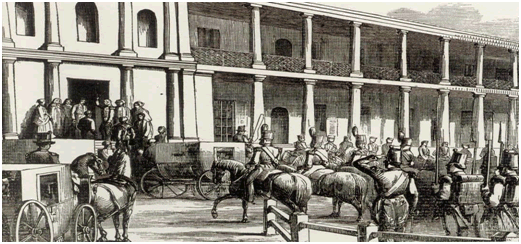 A depiction of the opening of the partially elected Parliament in 1843.
2. The appointed Council (1855 - 1933)
A depiction of the opening of the partially elected Parliament in 1843.
2. The appointed Council (1855 - 1933)
In 1855 a system of responsible government was established in New South Wales with a bicameral Parliament comprising a Legislative Assembly, in addition to the Legislative Council. The new Legislative Council was appointed by the Governor on the advice of the government of the day (rather than being partly elected as it had been before).
Members of the Council were to serve an initial five year term, following which the Council’s membership would be appointed for life. The members of the Assembly were elected by male voters aged 21 and over, subject to property qualifications. The government was formed from the members who had the majority of seats in the Assembly or lower House, in line with constitutional arrangements followed in Britain.
Early clashes with the government
The early Council had almost identical powers to those of the Assembly. It could amend or reject any bill, including a money bill. However, appointed members of the Council tended to be more conservative than the elected members of the Assembly, and the two Houses frequently clashed. Between 1858 and 1861 a number of government bills were defeated in the Council which contributed to the fall of several governments.
The Council’s power to thwart the government prompted attempts to reform the Council by introducing popular elections but these early attempts at reform were unsuccessful.
Council opposition to government measures also resulted in the use of ‘swamping’, a tactic where governments would advise the Governor to appoint additional members to the Council to ensure support for their legislation.
The House of review
In 1861 the Council was dissolved after the first five years of its existence and reconstituted with nominees for life. The reconstitution resulted in the Council being purged of some its more extreme conservative elements. At the same time it appears to have been widely accepted that an obstructionist Council was not in the best interests of stable government.
From 1861 the Council took on a role more characteristic of a House of review: investigating social and political issues through committees, and amending or delaying hasty or ill-advised legislation. The Council saw itself as the final safeguard of the constitution, and a counter-balance to the often faction-torn lower House. However, it was generally accepted that the elected lower House was supreme in relation to money bills.
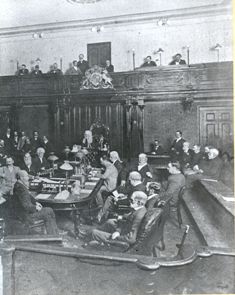 The Legislative Council sitting in 1895.
Attempts to abolish the Council
The Legislative Council sitting in 1895.
Attempts to abolish the Council
In 1925 the Lang Labor government came to power with a program of social and economic reform. Faced with what he viewed as an Upper House hostile to his reforms, Premier Lang set about attempting to abolish the Council by ‘swamping’ it with Labor Party members who would vote in favour of legislation to abolish the Council.
In December 1925, 25 new members were appointed to the Council, following two earlier appointments in July. Despite these new appointments, however, the bill to abolish the Council ultimately failed as two Labor members crossed the floor to vote against the bill and another five were absent for the vote. In 1926, Premier Lang asked the Governor to appoint a further ten members to the Council, but on this occasion the Governor refused.
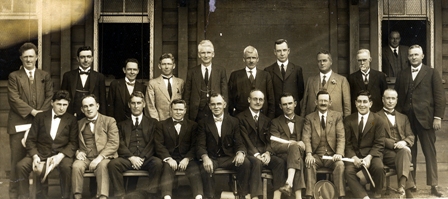 Members of the Legislative Council appointed by the Lang Government to
carry through Government legislation abolishing the Council - December 1925.
Safeguarding the Council
Members of the Legislative Council appointed by the Lang Government to
carry through Government legislation abolishing the Council - December 1925.
Safeguarding the Council
In response to Premier Lang’s attempts to abolish the Council, and with the example of Queensland Labor’s 1922 abolition of that State’s Upper House fresh in its mind, in 1928 a newly-elected conservative government acted to safeguard the existence of the Council.
This was achieved by amendments to the
Constitution Act 1902 which inserted a new provision, section 7A. This section, which is still in force today, provides that a bill to abolish the Council or alter its constitution or powers must be passed by both Houses of Parliament, and approved at a referendum, before it can receive assent. Section 7A itself is entrenched in that it cannot be altered or repealed except by a bill approved at a referendum. The effect of these provisions is that the Council cannot be abolished or reconstituted without the support of a majority of the voters.
Between 1930 and 1932 the re-elected Premier Lang attempted to repeal section 7A, and made a further attempt to abolish the Council. However, the validity of section 7A was upheld by the courts, and Lang’s further attempt at abolition failed.
While the question of the validity of section 7A was still before the courts, Premier Lang secured 25 additional appointments to the Council, giving him control over both Houses of Parliament. These additional appointments included the first two women members of the Council, Catherine Green and Ellen Webster.
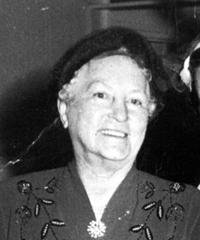 | 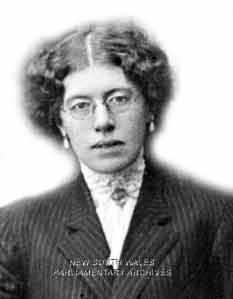 |
| Mrs Catherine Green | Mrs Ellen Webster |
However, Lang’s struggle with the Council was eventually curtailed by troubles with faction fighting in the Labor Party and the crisis of the Great Depression.
Finally, in perhaps the most dramatic constitutional event in the State’s history, Governor Sir Philip Game exercised his reserve powers to dismiss Lang from office on 13 May 1932 after Lang sought to prevent the Commonwealth Government from seizing New South Wales revenues for interest owed by the New South Wales Government to foreign bondholders.
3. The indirectly elected Council (1933 - 1978)
Following the dismissal of Premier Lang in 1932, a conservative Government took office with a commitment to reform the membership and powers of the Council.
Under these reforms, the Council was reconstituted as a body elected by the members of both Houses of Parliament voting as a single electoral college (in place of the earlier system of appointments by the Governor). Members of the Council were to serve for a term of 12 years, with a quarter of the membership (15 members) retiring every three years.
The Council’s membership was fixed at 60
and the practice of ‘swamping’ was brought to an end.
At the same time as these reforms, the procedures for resolving deadlocks between the two Houses were clarified by the insertion of sections 5A and 5B into the
Constitution Act 1902. Section 5A entrenched the convention since 1861 with regard to the supremacy of the lower House over certain money bills. Section 5B provided that disputes between the Council and the Assembly in relation to other types of bills were to be resolved by referendum.
Despite these reforms to the constitution and powers of the Council, abolition of the Council remained Labor policy after 1933. Indeed, there were three further unsuccessful attempts by Labor to reform or abolish the Council between 1934 and 1961.
In the final attempt, a bill for the abolition of the Council was put to the people at a referendum, and decisively defeated by 57.6% of the votes.
4. The directly elected Council (1978 onwards)
In 1977 the Wran Labor government introduced reforms to transform the Council from a House indirectly elected by the members of Parliament to a House directly elected by the people. By now, the Council was the last non-elected House in Australia. Under Wran’s reforms, members of the Council were to be elected by voters across the whole State of New South Wales, in contrast to the members of the Assembly who continued to be elected from individual constituencies. The method of election adopted for the Council was a form of proportional representation (which results in candidates being elected in proportion to the votes they receive).
Members of the Council were to serve a term equivalent to three terms of the Legislative Assembly (nine years), with a third of the membership (15 members) elected at each successive periodic Council election. The total membership of the Council was to be reduced from 60 to 45.
The reforms introduced by Premier Wran were implemented progressively over the next three elections commencing with the first popular election for the Council in 1978.
Following the 1984 election, all members of the Council have been directly elected by the people of New South Wales.
Later reforms introduced by the Greiner administration in 1991 reduced the Council’s membership from 45 to 42, shortened the term of office of Council members to two terms of the Assembly (effectively eight years), and provided for the filling of half the Council seats (21 seats) at each popular election.
Other developments since 1978 have affected the method of electing the Council. In 1987 a system of group or ‘above the line’ voting was adopted similar to the system followed in Senate elections. In 1990 party names were added to the ballot paper and the registration of political parties was introduced.
In 1999 group voting ‘tickets’ were abolished removing the ability of parties to determine the preferences of electors who choose to vote ‘above the line’.
With the introduction of popular elections for the Council in 1978, and subsequent changes to the system of election, no Government has had a majority in the Council since 1988. These developments, coupled with the relatively strong constitutional powers of the Council, have seen the Council evolve to take on its modern role as a House of review.
More information
New South Wales Legislative Council Practice, Chapter 2
History of Democracy in NSW.
